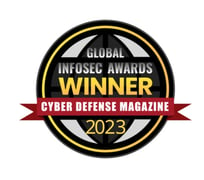Next named exclusive Trail Blazer in NEW 2024 Radicati DLP Market Quadrant Report
Read the Report

IRM & DLP Reports
Learn more
"Outperformer, Market Leader"
Get the report
“Technology Leader”
Download the report

Rivian hyperautomates Insider Risk Detection and Response.
“Next DLP is an invaluable partner in safeguarding our organization, enabling swift and effective responses, and simplifying insider threat detection and remediation”
- Tim Vulanich, Senior Staff Cybersecurity Engineer, Rivian.


















AI-powered assistant streamlines data loss and insider threat investigations and analysis; reducing the time to contain and resolve threats.

.png?width=204&name=Top%20infosec%20innovators%20Winner%20PNG-%20Badge%20(2).png)
%201.png?width=204&name=CISO%20Choice%20Award%202023%20Data%20Security%20Next%20DLP%20(1)%201.png)

.jpg?width=204&name=Stellar_Startups_vertical%20(1).jpg)

%20(2)%20(1)%20(1).png?width=204&name=23-SC_Awards-Final-WINNER-Logo-RGB_FINAL-LARGE%20(1)%20(2)%20(1)%20(1).png)

Data protection controls across managed and unmanaged devices to stop data loss.
Realtime employee coaching when handling sensitive data and intellectual property.

Machine Learning & Artificial Intelligence detect insider threats and risk score anomalous activity sequences relative to peer group.

Get complete visibility of data flow, from endpoints to the cloud, and contextualize detections to reduce time to contain and respond to threats.




